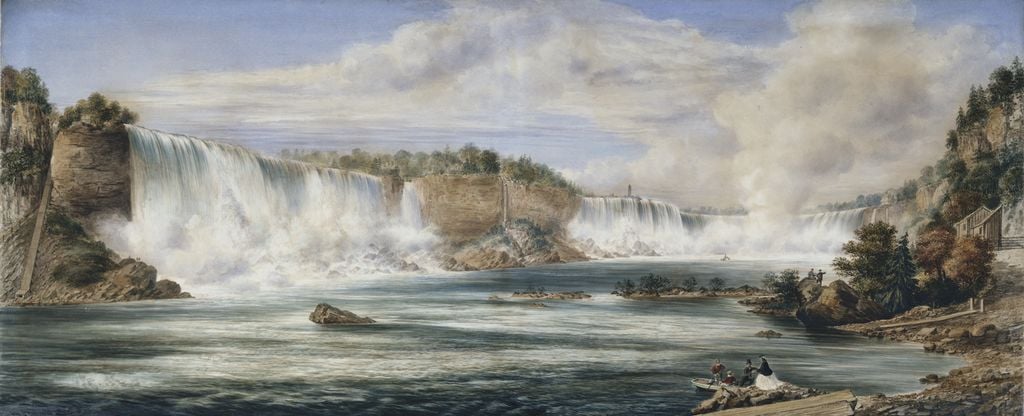
Canada
Explore The Royal Family's close relationship with the region, as well as the diverse artistic traditions represented in the Royal Collection
Coat
c. 1800Leather and caribou skin | 117.0 x 53.0 cm (whole object) | RCIN 72705
Artistic expression, practical function and spiritual belief converge in this caribou skin coat from north-eastern Canada. Garments like this were worn by nomadic Naskapi, Innu and Cree hunters from as early as 1700.
The coats were made as a way of venerating the caribou and ensuring the success of future hunts. Women painted the coats with motifs revealed in their husbands' dreams, which were thought to grant power to the hunters. Careful preparation of this kind was vital to ensure that the 'Lord of the Caribou' would dispatch animals from their home for the hunt. If killed in an appropriate manner, the caribou spirits would return to earth again for future hunts. The coats were thought to lose their power after a year, and might then be traded or sold by their owners.Women painted the coats with motifs revealed in their husbands' dreams, which were thought to grant power to the hunters. They used pigments made from plants, fish roe and natural deposits of red and yellow ochre. The parallel lines on this coat would have been applied using fork-like tools of antler or bone with parallel tines. Careful preparation of this kind was vital to ensure that the 'Lord of the Caribou' would dispatch animals from their home for the hunt. If venerated appropriately, the caribou spirits would return to earth again for future hunts.
The coats were thought to lose their power after a year, and could then be traded or sold. This garment was collected by a British soldier, Colonel Bloomfield, and presented to the Prince of Wales (later George IV) in 1807. It was displayed in the prince’s armoury, indicating European curiosity about Indigenous art and life at this time.







